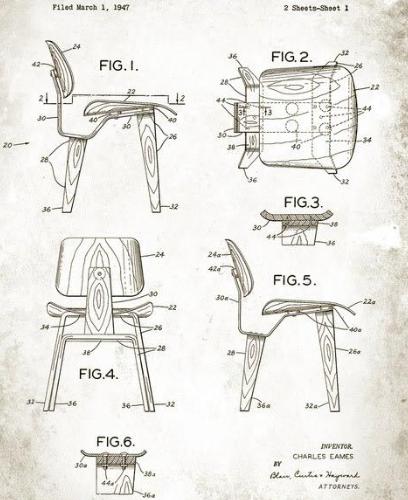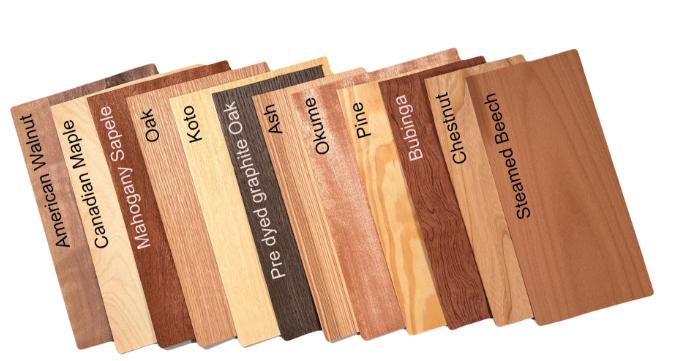 Nov 20, 2025
Nov 20, 2025
 Calvin Wong
Calvin Wong
 40
40
As the demand for stylish, lightweight, and ergonomically designed dining chairs continues to rise, bent plywood has become one of the most important materials in modern furniture manufacturing. For brands producing dining chairs at scale—or maintaining large hospitality and commercial furniture fleets—OEM and custom bent plywood spare parts are essential for ensuring consistent quality, long-term usability, and efficient after-sales service.
This article explains everything furniture brands, wholesalers, and chair manufacturers need to know about OEM and custom bent plywood spare parts: from design considerations to production techniques, cost factors, lead time expectations, and best practices for selecting a reliable supplier.
Bent plywood components—such as seat shells, backrests, armrests, and molded plywood bases—are critical structural elements in dining chairs. Over time, even high-quality chairs may require replacement parts due to:
Wear and tear
Scuffs, scratches, or water damage
Veneer peeling
Commercial-use damage
Changing upholstery or finishes
Restaurant or hotel renovation cycles
Using OEM or custom spare parts allows brands to:
Extend the lifespan of existing furniture
Maintain visual and structural consistency
Achieve faster repair turnaround
Reduce the cost of full chair replacement
Strengthen their after-sales service
For manufacturers, offering bent plywood spare parts also becomes a profitable revenue stream that deepens customer loyalty.
Furniture brands typically require the following bent plywood spare parts for dining chairs:
The largest component of most bent plywood chairs, available in various curvatures and thicknesses.
Single-piece or curved backrests shaped for ergonomic support.
Reinforcement layers hidden beneath upholstery.
Curved plywood arm elements found in premium dining chair models.
Less common but popular among Scandinavian-style dining chairs.
Parts that are already:
Drilled
Cut
Sanded
Sprayed
Edge-sealed
Finished with veneer
Brands prefer pre-finished parts because they simplify assembly, reduce labor costs, and ensure visual consistency across batches.
OEM parts are produced strictly according to the original drawings or samples. They match:
Shape
Dimensions
Hole positions
Radius and curvature
Veneer type
Finish or color
Structural thickness
OEM parts are ideal for replacing damaged chair components without altering the aesthetic or performance.
Custom parts go beyond replication—they allow furniture brands to modify or upgrade:
Shape and ergonomics
Thickness and strength
Surface veneer (oak, walnut, birch, ash, etc.)
Surface finishing
Edge curves
Mounting methods
Upholstery compatibility
Custom spare parts are commonly used in scenarios such as:
Rebranding chair collections
Upgrading old models
Regional design adaptations (e.g., EU vs. US sizing)
Hospitality furniture replacement projects
Developing new models without full retooling
To ensure accurate production, the following information is essential:

STEP
DXF
DWG
IGES
PDF with dimensions
If files are unavailable, a physical sample can be reverse-engineered.
Common thicknesses:
6 mm
8 mm
10 mm
12 mm
Higher thickness = stronger structure but heavier chair.

Veneer options:
Natural oak
Birch
Walnut
Beech
Ash
Maple
Brands must confirm veneer direction (vertical/horizontal grain).
Important details include:
Screw hole size
Hole spacing
Embedded metal parts
Reinforcement plates
Underside routing
Accurate drilling ensures easy assembly and prevents structural failures.
Finishing options include:
Clear lacquer
Water-based coating
PU spray
Staining (light/dark walnut, black, etc.)
Matte or glossy finish
UV-cured coating (for high traffic areas)
Understanding the production process helps brands evaluate quality and reduce risks.
Logs are peeled into thin layers
Moisture content is controlled
Veneers are graded for quality
Eco-friendly or low-VOC adhesives are increasingly required for export.
Veneers are cross-layered to maximize tensile strength.
High-pressure hot pressing forms the final curve shape.
Edges, curves, and shapes are precisely cut.
Accurate drilling ensures compatibility with metal frames or upholstery.
High-demand markets (EU/US) prefer refined, seamless edges.
Parts are coated, varnished, or veneered with the buyer’s specifications.
Furniture brands should evaluate suppliers based on:
Even small deviations will cause mounting issues.
Moisture imbalance causes warping or cracking after installation.
High-grade adhesives prevent delamination and structural failure.
Premium markets demand fine sanding with minimal surface defects.
Consistent color and grain improve brand image and customer satisfaction.
Edges are most prone to damage; proper sealing and sanding matter.
Prices vary depending on:
MOQ usually ranges 100–300 pcs per model; small batches cost more.
Walnut is more expensive than birch or beech.
More extreme curvatures require stronger molds and higher pressure.
Thicker plywood means higher material and pressing cost.
New molds cost anywhere from $300–$2,000 depending on complexity.
UV coatings or matte finishes add cost compared to simple clear lacquer.
Typical production timelines:
Sample making: 7–15 days
New mold creation: 10–30 days
Mass production: 25–40 days
Complex veneering/finishing: additional 5–10 days
For urgent commercial replacements, some suppliers keep standard shapes in stock.
Furniture brands should evaluate suppliers based on:
Look for suppliers who have worked with major brands or global retailers.
Factories with CNC cutting, automatic sanding, and 300–500 ton presses produce higher-quality parts.
High precision is key for OEM replacements.
Check humidity control, veneer grading, and glue application standards.
Strong finishing quality = lower defect rate and higher brand value.
Important for brands with smaller projects or replacement orders.
Furniture brands that provide reliable spare parts gain:
Longer product lifespan
Stronger brand reputation
Lower customer complaints
Higher repeat purchase rate
Better sustainability record
Reduced waste and environmental impact
Many high-end furniture companies use spare parts as a key competitive differentiator.
Bent plywood spare parts play a crucial role in modern furniture manufacturing, maintenance, and after-sales service. Whether a furniture brand needs OEM replacements for existing collections or custom components for new product development, understanding the technical requirements, manufacturing processes, cost structures, and supplier selection criteria is essential.
By partnering with the right bent plywood factory, brands can ensure consistent quality, faster production cycles, improved sustainability, and a better customer experience—ultimately increasing their long-term success in the competitive dining chair market.